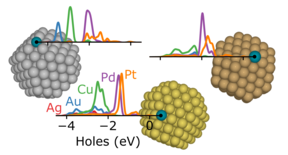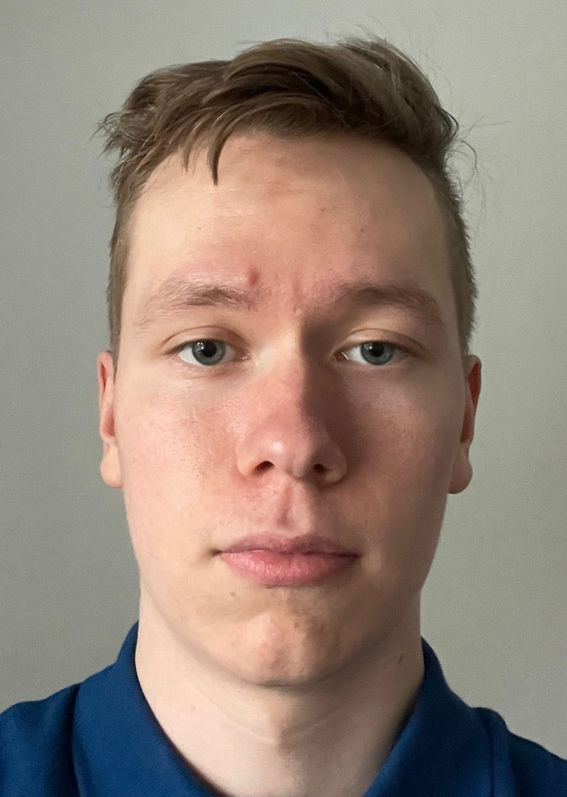Single-atom dopants in metallic nanoparticles can offer high tunability for plasmonic-catalytic applications

In plasmonic-catalytic nanoparticles a plasmonic metal acts antenna for light absorption, whereas the catalytic metal component facilitates the reaction. Plasmonic nanoparticles can absorb light at certain resonant wavelengths very efficiently. As the light-induced plasmonic excitation in the nanoparticle decays, non-thermal high-energy electrons and holes, so called “hot carriers”, are formed. Hot carriers can interact with nearby molecules and enhance chemical reactions. Typically, the reactions are catalyzed by carriers of certain energies, which is why the ability to control the energies of the hot carriers is important. Experimental investigations of the plasmonic-catalytic properties are challenging and time consuming, but computational tools can reveal quantum mechanical insight and trends.

The CEST group members Daniel Sorvisto, Tuomas Rossi, and Patrick Rinke recently published their computational exploration of single-atom dopant effects in plasmonic nanoparticles. The goal of the study was to analyze the effects of doping on the hot-carrier generation in the nanoparticle and the extent to which hot carriers can be tuned. Computations are based on Kohn-Sham DFT and TDDFT. Two different nanoparticle structures of a few hundred atoms, three different plasmonic metals, and five different catalytic metals are included in the study. Results show that the local hot-carrier generation can be tuned by choosing the right dopant element while the plasmonic response of the nanoparticle as a whole is not significantly affected by the dopant. As the resonant wavelengths of nanoparticles can also be tuned by the overall shape, size, and composition of the nanoparticle, the findings of the study indicate that plasmonic nanoparticles could be simultaneously tailored to absorb light efficiently and generate hot carriers tuned to a specific purpose. An interesting next step would be to study the catalytic performance and include the interactions between the nanoparticles and reactant molecules in the modeling.
The paper is published in The Journal of Physical Chemistry C (doi.org/10.1021/acs.jpcc.3c01998).
- Published:
- Updated:
Read more news

DeployAI Partners Gather for Heart Beat Meeting in Helsinki
The European DeployAI project's partners gathered for the Heart Beat meeting hosted by Aalto University Executive Education in Helsinki.
Get to know us: Associate Professor Maria Sammalkorpi
Sammalkorpi received her doctorate from Helsinki University of Technology 2004. After her defence, she has worked as a researcher at the Universities of Princeton, Yale and Aalto.
Aalto computer scientists in ICML 2024
Computer scientists in ICML 2024